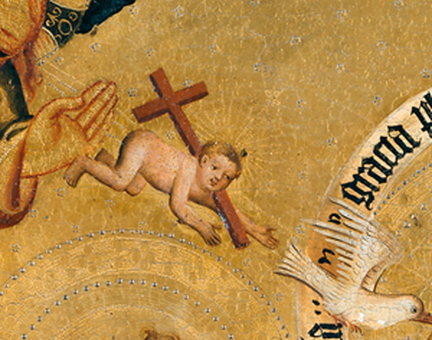How December 25 Became Christmas

"The Bible offers few clues: Celebrations of Jesus’ Nativity are not mentioned in the Gospels or Acts; the date is not given, not even the time of year. The biblical reference to shepherds tending their flocks at night when they hear the news of Jesus’ birth (Luke 2:8) might suggest the spring lambing season; in the cold month of December, on the other hand, sheep might well have been corralled. Yet most scholars would urge caution about extracting such a precise but incidental detail from a narrative whose focus is theological rather than calendrical.
"The extrabiblical evidence from the first and second century is equally spare: There is no mention of birth celebrations in the writings of early Christian writers such as Irenaeus (c. 130–200) or Tertullian (c. 160–225). Origen of Alexandria (c. 165–264) goes so far as to mock Roman celebrations of birth anniversaries, dismissing them as “pagan” practices—a strong indication that Jesus’ birth was not marked with similar festivities at that place and time.1 As far as we can tell, Christmas was not celebrated at all at this point."
Finish Reading How December 25 Became Christmas
The First Christmas, The Story of Jesus' Birth in History and Tradition

"The time-honored traditions of Christmas are dear to the hearts of Christians today. The story of the first Christmas recaptures the imagination as it is retold year after year in Bible readings, carols, Christmas pageants, live manger scenes and crèche displays, to name a few. Perhaps in the midst of all this, we might wonder what the story of Jesus’ birth meant to the earliest Christians. How did their story differ from the one we tell today, and what significance did they give to each member of the cast of characters? In the articles that follow, expert Bible scholars and archaeologists offer glimpses of the first Christmas as recounted and understood by those who first told the beloved story.
Early and modern-day Christians alike have been captivated in particular by the three magi in the Christmas story. Author Robin Jensen tells us that early Christian art contains more representations of the adoration of the magi than of the infant Jesus in the manger. What key theological message did the early Christians see in the story of the magi? Jensen uncovers the answer by tracing the magi’s numerous appearances in art and literature from the period in “Witnessing the Divine: The Magi in Art and Literature.”
Perhaps the most mystifying part of the magi’s journey is the star that guides them. Scholars and astronomers have tried for some time to identify a celestial event that corresponds with the magi’s guiding star, in part because it would also pinpoint the date of Jesus’ birth. Where modern science fails to explain the mysterious star, Babylonian astronomy gives better clues in “The Magi and the Star: Babylonian Astronomy Dates Jesus’ Birth” by Simo Parpola.
In contrast, author Dale C. Allison, Jr. does not look to astronomy for an explanation of the magi’s star, though he does look heavenward. In “What Was the Star that Guided the Magi,” he suggests that another sort of celestial entity was the bright light that guided the magi’s journey to pay homage to the infant Jesus.
The star, tradition tells us, led the magi to the tiny Judean town of Bethlehem. However, many scholars of the New Testament have come to the conclusion that Jesus was born in Nazareth, not Bethlehem. Still others remain convinced that the first Christmas took place in Bethlehem. “Where Was Jesus Born?” offers a two-part exploration of both possibilities. Steve Mason’s “O Little Town of ... Nazareth?” looks at the passages in the Biblical text that suggest Nazareth was Jesus’ birthplace. Jerome Murphy O’Connor supports the Bethlehem tradition using archaeology, the gospels and other ancient texts in “Bethlehem ... Of Course.”
Sara Murphy
December 2009
Finish Reading The First Christmas, The Story of Jesus' Birth in History and Tradition
